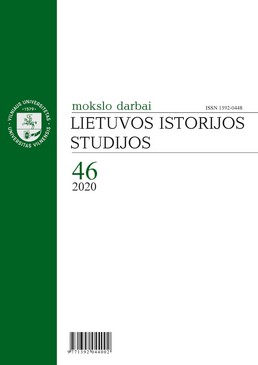Dokumentas teismo proceso įrodymų hierarchijoje Lietuvos Didžiojoje Kunigaikštystėje XV amžiaus pabaigoje– XVI amžiaus pirmoje pusėje
The Document in the Hierarchy of Evidence of the Legal Process in the Grand Duchy of Lithuania in the Late Fifteenth Century and the First Half of the Sixteenth Century
Author(s): Irena ValikonytėSubject(s): History of Law, Civil Law, 15th Century, 16th Century
Published by: Vilniaus Universiteto Leidykla
Keywords: Grand Duchy of Lithuania; Lithuanian Statute; Lithuanian Metrica; law; court; legal process; the legal culture; system of evidence; document;
Summary/Abstract: The discussion on the legal power of documents generated by the researchers exploring the written culture of the Grand Duchy of Lithuania in the fifteenth and sixteenth centuries invites for a more detailed analysis of the usage of a written document in the legal process, the chronology of its legal regulation, the document’s place in the system of evidence as well as its meaning in the legal consciousness of the nobles. The legal proceedings and rulings recorded in the judicial affairs books incorporated into the Lithuanian Metrica reveal the process when, with the development of the written culture and the increase of the demand for documents in the state’s internal affairs, the written document evolved into an independent and sound legal evidence in the judicial process. In the civil cases, primarily concerning the land ownership, the legal power of a written document was recognized already in the middle of the fifteenth century (although there was no peremptory requirement to present written documents in the judicial process), and approved by the extended edition of the First Statute of Lithuania. In the late fifteenth and early sixteenth centuries, the long-lived “colorful robes of justice” (the oath, the gesture, the placing of one’s cap) were replaced in the system of legal evidence by written documents which, from then on, were considered as more reliable evidence than a personal oath, and, in some cases, even a testimony. Eventually, this view found its place in the consciousness of the nobles who documented their transactions and used documents to solve legal conflicts. Moreover, in Lithuania, unlike in the Kingdom of Poland, the judges considered not only the public, but also the legitimate private documents as legal evidence of equal importance. Although, the hierarchy of legal evidence, that prioritized the documents was embedded only in the Second Statute of Lithuania (chapter IV article 52, entitled “On evidence and defense” (O dovodech i otvodech), the analysis of sources allows to decisively affirm that the main source of the aforementioned article was the practice of the courts in the late fifteenth and early sixteenth centuries.
Journal: Lietuvos istorijos studijos
- Issue Year: 2020
- Issue No: 46
- Page Range: 8-24
- Page Count: 17
- Language: Lithuanian

